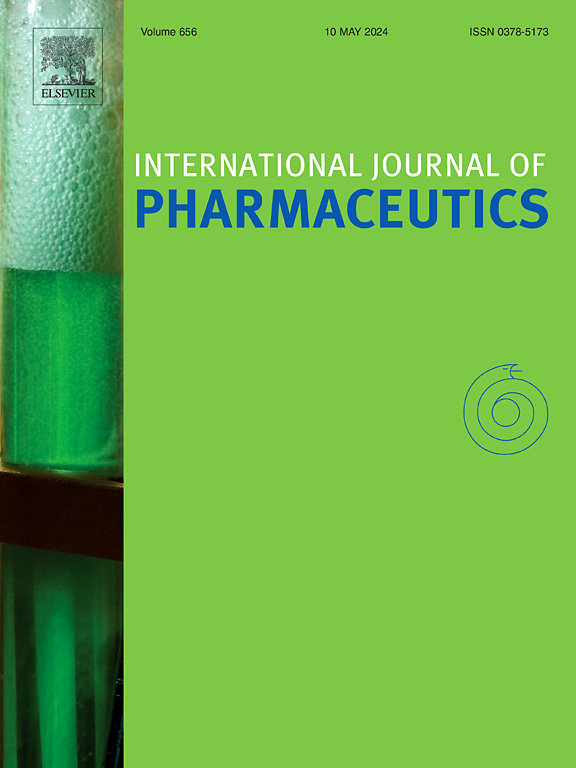唾液酸功能化纳米材料用于靶向癌症治疗、诊断和治疗。
IF 5.3
2区 医学
Q1 PHARMACOLOGY & PHARMACY
引用次数: 0
摘要
靶向癌症治疗,通过利用特定分子在肿瘤上的过表达,如唾液酸(SA),提供了一个有前途的策略,以提高抗肿瘤疗效,同时尽量减少脱靶效应。纳米材料的SA修饰可以同时靶向肿瘤细胞和肿瘤相关免疫细胞,改善药物传递和治疗效果。高SA表达的肿瘤细胞结合唾液酸结合免疫球蛋白样凝集素(Siglecs)和肿瘤相关免疫细胞上表达的选择素,可能有助于免疫抑制。通过与这些受体结合,sa修饰的纳米材料增强了肿瘤的生物分布和细胞摄取,提高了化疗药物的疗效。此外,sa功能化的纳米材料可以靶向肿瘤相关免疫细胞,如肿瘤相关巨噬细胞(tam),允许化学免疫治疗剂的递送,可以消耗tam或将其重新编程为抗肿瘤M1表型。sa修饰的纳米材料也可以靶向外周血单核细胞和中性粒细胞,利用它们作为药物递送到肿瘤核心的载体。此外,sa功能化的纳米材料在癌症成像和治疗中被证明是有价值的,增强了显像剂和治疗纳米材料的功效。这种多方面的方法在推进靶向癌症治疗方面具有巨大的潜力。本文章由计算机程序翻译,如有差异,请以英文原文为准。

Sialic acid-functionalized nanomaterials for targeted cancer therapy, diagnosis, and theranostics
Targeted cancer therapy, by leveraging the overexpression of specific molecules on tumors, such as sialic acid (SA), offers a promising strategy to enhance antitumor efficacy while minimizing off-target effects. SA modification of nanomaterials can target both tumor cells and tumor-associated immune cells, thereby improving drug delivery and therapeutic outcomes. Tumor cells with high SA expression bind to sialic acid-binding immunoglobulin-like lectins (Siglecs) and selectins expressed on tumor-associated immune cells, potentially contributing to immunosuppression. By binding to these receptors, SA-modified nanomaterials enhance tumor biodistribution and cellular uptake, and improve the efficacy of chemotherapeutics. Additionally, SA-functionalized nanomaterials can target tumor-associated immune cells such as tumor-associated macrophages (TAMs), and allow for the delivery of chemoimmunotherapeutic agents that can deplete TAMs or reprogram them to an antitumor M1 phenotype. SA-modified nanomaterials can also target peripheral blood monocytes and neutrophils, and serve as vehicles for drug delivery to the tumor core. Furthermore, SA-functionalized nanomaterials are valuable in cancer imaging and theranostics, enhancing the efficacy of imaging agents and theranostic nanomaterials. Theismultifaceted approach holds significant potential for advancing targeted cancer therapies.
求助全文
通过发布文献求助,成功后即可免费获取论文全文。
去求助
来源期刊
CiteScore
10.70
自引率
8.60%
发文量
951
审稿时长
72 days
期刊介绍:
The International Journal of Pharmaceutics is the third most cited journal in the "Pharmacy & Pharmacology" category out of 366 journals, being the true home for pharmaceutical scientists concerned with the physical, chemical and biological properties of devices and delivery systems for drugs, vaccines and biologicals, including their design, manufacture and evaluation. This includes evaluation of the properties of drugs, excipients such as surfactants and polymers and novel materials. The journal has special sections on pharmaceutical nanotechnology and personalized medicines, and publishes research papers, reviews, commentaries and letters to the editor as well as special issues.

 求助内容:
求助内容: 应助结果提醒方式:
应助结果提醒方式:


